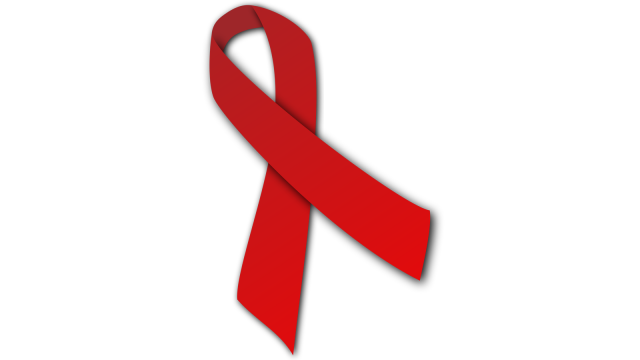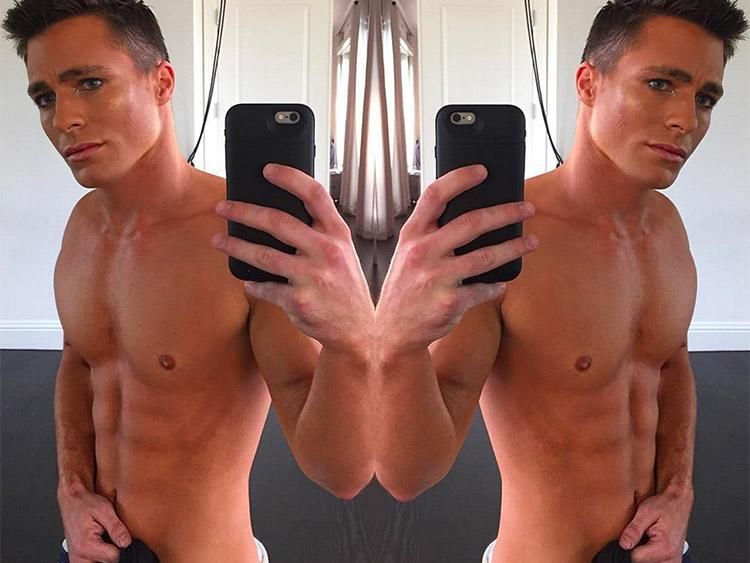10 Things This Season Of “RuPaul’s Drag Race” Taught Us About Gay Racism
This article is in no way meant to imply RuPaul, the contestants on RuPaul’s Drag Race, or any of the editors, producers, PAs or key grips on the show are racist. That’s something only God and their hairdressers would know for sure. But, given the fact that the gay community is a microcosm of our country, it stands to reason problems like racism and discrimination are raised, dissected, and debated by our fair queendom.
With Drag Race being one of the most popular television shows by and for the LGBTQ community and their allies, there’s a lot we can learn about ourselves if we read between the lines. This season is arguably the best season in Drag Race herstory. It’s also boasts a top 4 who are all people of color. Despite this season’s apparent diversity, it also can show us some of the random bits of racism and bias we sometimes too easily take for granted every day.
RuPaul’s Drag Race is part commentary on reality television, part queer Super Bowl, part drag documentary and all inspiration by our own personal guru RuPaul. Or GuRuPaul, if you’re nasty. As marginalized and bullied people, it’s strange that we marginalize and bully others from time to time. Here’s hoping that by talking about these types of issues we can, “Snap out of it!” Chad Michaels are you there?
Here are 10 things this season revealed about racism within the LGBTQ:
1.) No Fats, No Femmes, No Asians

Kim Chi is an accomplished artist, Instagram celebrity, and Drag Innovator. She’s done things with make-up that could flip your lace-front. But as she aptly pointed out in the “Shady Politics” episode, so many guys on Grindr and other hook up apps say things that are not just exclusionary, but pretty racist. Just because this phrase is an attempt at word play doesn’t mean it’s not discrimination. Sure people have their personal preferences but when you commit hand to keyboard it crosses the line from personal aesthetic preferences to a singular racist message. After all, some people have posted “We Don’t Like Gays” signs outside their businesses. Is there a difference?
2.) “You’re Hot for a Black Guy”

It’s sad to think that Naomi Smalls and Bob the Drag Queen are two of the hottest commodities in the gay world, but are considered hot in spite of something. Saying “You’re hot for a black guy” not only implies most black people are not hot it also implies a racial hierarchy. White supremacy exists in our culture but that doesn’t mean it’s right or we should encourage it. Yes there are a ton of white porn stars, underwear models, and celebrities vying for our attention. But many of them are also straight. That doesn’t make them any better than the attractive people of color. We should challenge our white standard of beauty, if only to give Lance Bass a break from all the attention.
3.) Ms. Derrick Barry, Poster Child for White Privilege?

Photographer: Magnus Hastings
People at times confuse white privilege for success or inherent advantages. But at its most simple definition, it’s that white people don’t always have to face the same challenges as people of color. Derrick even admitted during “The Grand Finale” he had never been challenged like this before. He’s a good-looking man and woman with not one, but two, attractive partners. He has a successful career that boasts a longtime Vegas run and America’s Got Talent credit. But it also seems like he practically walked into the top 5. Unlike former frontrunners Raja or Bianca Del Rio, it wasn’t necessarily based on an insane amount of talent. It just seems like he wasn’t called out for obvious offenses people of color had been judged for in prior seasons. For a queen in a drag competition to not glue down their brows and sew more than a seam seems insane. He delivered not one but three outfits built around a bathing suit. Former contestants like Joslyn Fox, Alissa Summers, and Venus D-Lite were sent home for outfits that had more work than Derrick’s. This is not an attack on Ms. Barry–who is very talented–but just a bit surprising that she was treated with kid gloves in the gauntlet of drag.
4.) ESL Does Not Mean Stupid

Most Americans do not speak more than one language despite our cosmopolitan culture. Hell, some Americans barely speak English. And yet, when people hear an accent they automatically think someone doesn’t get it. The editors sort of relish those moments when an ESL queen makes a funny turn of phrase or mispronounces a word. Throughout the season there have been moments where Cynthia Lee Fontaine or Kim Chi were caught unawares and given a shady edit. No T No Shade to the editors but they simply come from different cultures. Their pop culture references are different and while in the high stakes Hunger Games of drag they may not be thinking in English. As viewers, we must be sure not to underestimate people just because they have an accent.
5.) The Puerto Rican Problem

Most Americans don’t even know Puerto Rico is a part of the United States. They also don’t know the struggles the natives of this popular tourist spot face. There’s the overwhelming debt, poverty, and strange identity as a not-quite-State of the Union. Puerto Rico has helped drive a fair amount of the viewership of Drag Race given it’s large drag community and the fact that American cable channels like Logo are available on the island. And yet, most Puerto Rican queens face the same struggle each season. They often wash out of acting or comedy challenges because of their accents. It’s just disappointing for them to get on the show yet face an inevitable failure. After all, Latrice Royale was never clocked by the judges for not being able to fit into a size 2 later in the season. Why should these queens be critiqued for an accent they had when they were cast?
6.) Cynthia Lee Fontaine is not Cuckoo.

It’s disappointing that the Puerto Rican queens are often viewed as zany or over the top. They are trying to be as savvy as American queens by bringing their own tag lines, sound bytes and memorable moments to the show. But they have different cultural touch points. The few gay characters in Spanish-speaking television shows and novellas are often over the top. Some Drag icons to Puerto Rican queens are stars like Charytin, La Lupe, Charo or the metaphysical Liberace himself Walter Mercado. By their standard, Cynthia is an understated wallflower. So her run in the “RuCo’s Empire” challenge was not insane but what the maxi challenge required, over-the-top acting. But over-the-top to Cynthia was obviously more than anyone bargained for. Either way, she and her Cucu have found their way into everyone’s hearts and won Miss Congeniality.
7.) Does Hating Bob Make You Racist? Maybe…

Bob, like Bianca Del Rio and Raja, assassinated every challenge on the show. He was a clear frontrunner based on pure talent. An admitted fan boy, he came to the competition to win. Now there’s nothing wrong with rooting for Naomi Smalls or Kim Chi or any of your favorites. But there’s a difference between voting for someone else vs. against Bob. It’s strange to think the people he’s sought to entertain and whose rights he’s fought for would go that extra step to hate him. It’s okay to dislike someone but many strong African American competitors have been hated, and even attacked on social media with racist comments. Let’s never forget what happened to Jasmine Masters and Kennedy Davenport last season. It’s worth taking the extra step to double check that petty dislike isn’t racism with a beat mug.
8.) ShoCanTell It’s a Bad Idea

Is it offensive to have Derrick Berry impersonate Laura Bell Bundy impersonating a borderline-offensive racial stereotype? Ehhh, kinda. Shots where fired when Sierra Mannie wrote her now infamous open letter to white gay men to stop impersonating black women. Her article, while a little inflammatory, did touch on a major issue. While white gay men may identify with black women but they are privileged by not being black or female. Who doesn’t love to tongue pop and say, “Okurrr?” But we should also be mindful that the struggle is in fact real and we have an opportunity to encourage change. Rather than pretending to be ratchet or use race for play we should venerate our African American idols and avoid stereotypes.
9.) Ratchet vs. Black

There is a huge difference between ratchet and black. In the “RuCo Empire” challenge it would be easy to boil down Empire, one of the most popular all-African American ensemble series, as just a series of mouth pops and ghetto colloquialisms. But it is more than that. RuPaul was just being her media mogul stunt-queen self by referencing what is huge in pop culture. But it was a bit tough to piece together with a cast of so many Non-African American queens. Also, when Michelle Visage reduced Bob’s penchant for dance gear to ratchet drag it didn’t do any one any favors.
10.) Race Blind Cosplay

Here’s something this season that really inspired change. Whether it was Bob the Drag Queen as Carol Channing or Thorgy Thor as Michael Jackson they showed that you can celebrate a star even if they are not your race. And you can do so without changing your color cosmetically. Also, a special shout out to Dax ExclamationPoint who donned Emma Frost and Sailor Mars cosplay at RuPaul’s Drag Con.
RuPaul’s Drag Race is too busy being an amazing television series. It doesn’t need to be more PC or lose any of its irreverence. But as fans and victims of oppression, we need think critically, ask questions, and ensure we aren’t jumping to potentially racist conclusions or missing the bigger picture.
We also need to be sure to check racism whenever and wherever we see it.




 Palant, former artistic director for
Palant, former artistic director for 






